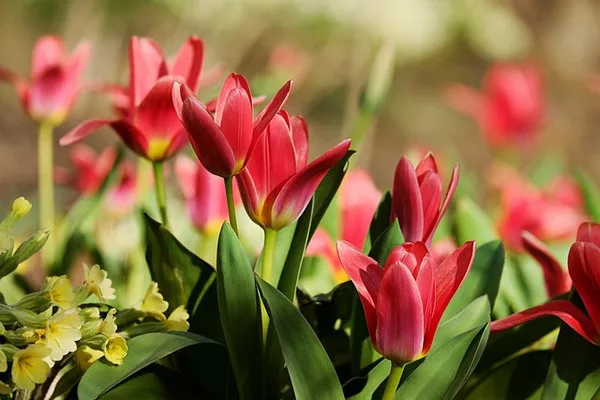Cats are cherished members of many households, bringing joy and companionship to their owners. However, responsible pet ownership extends beyond providing love and care; it also involves creating a safe environment. One often overlooked aspect is the presence of plants, as some can be potentially harmful or toxic to cats. In this article, we will explore a variety of common plants that pose a threat to feline health, empowering cat owners with knowledge to keep their beloved pets safe.
Lilies: A Beautiful Danger
While lilies may be admired for their beauty, particularly during spring and Easter, they are highly toxic to cats. Varieties such as Easter lilies, tiger lilies, and Asiatic lilies contain compounds that can lead to severe kidney damage or failure if ingested by felines. Even a small nibble on the leaves, petals, or pollen can have dire consequences. Symptoms of lily poisoning in cats include vomiting, lethargy, and a lack of appetite. Immediate veterinary attention is crucial if you suspect your cat has ingested any part of a lily.
Dieffenbachia: The Dumb Cane Conundrum
Known for its striking foliage, the Dieffenbachia plant, also called dumb cane, is a common houseplant that poses a threat to cats. The plant contains calcium oxalate crystals, which, when chewed or bitten, can cause irritation and swelling in a cat’s mouth and throat. This can lead to excessive drooling, difficulty swallowing, and even temporary loss of voice. In severe cases, Dieffenbachia toxicity can result in respiratory distress. If a cat displays these symptoms after contact with dumb cane, immediate veterinary attention is essential.
Philodendron: Toxic Elegance
The Philodendron, a popular decorative plant, contains insoluble calcium oxalate crystals similar to those found in Dieffenbachia. Ingesting any part of the Philodendron, including leaves and stems, can cause irritation in a cat’s mouth and gastrointestinal tract. Symptoms include drooling, difficulty swallowing, and vomiting. In most cases, the toxicity is not life-threatening, but prompt veterinary care is still recommended to alleviate discomfort and ensure a full recovery.
Azaleas and Rhododendrons: Colorful Threats
Azaleas and rhododendrons are beloved for their vibrant flowers and lush foliage, but they can be toxic to cats if ingested. These plants contain grayanotoxins, which can lead to symptoms such as drooling, vomiting, diarrhea, and, in severe cases, heart arrhythmias. Immediate veterinary attention is crucial if a cat is suspected of consuming any part of these plants.
Sago Palm: A Deadly Beauty
The Sago Palm, often used in landscaping, is an exceptionally toxic plant for cats. All parts of the plant, including the seeds, contain a potent toxin called cycasin. Ingesting even a small amount of the Sago Palm can lead to severe liver damage and, if left untreated, may be fatal. Symptoms of Sago Palm toxicity in cats include vomiting, diarrhea, lethargy, and incoordination. Immediate veterinary intervention is necessary for the best chance of a positive outcome.
See Also: What Do Plants Need To Survive? A Comprehensive Guide
Aloe Vera: More Than Just a Sunburn Soother
Aloe vera is well-known for its soothing properties, but it can pose a threat to cats if ingested. The plant contains compounds that can cause vomiting, diarrhea, and lethargy in felines. While aloe vera toxicity is generally mild and not life-threatening, it’s essential to keep the plant out of reach to prevent any adverse effects on your cat’s health.
Preventing Plant-Related Cat Poisoning
As a responsible cat owner, it’s crucial to take proactive measures to prevent plant-related poisonings. Here are some practical steps you can take:
Educate Yourself: Familiarize yourself with the toxicity levels of common plants and remove any toxic varieties from your home.
Create a Safe Environment: Place toxic plants out of your cat’s reach or choose non-toxic alternatives for indoor and outdoor landscaping.
Supervise Outdoor Activities: If your cat spends time outdoors, ensure they are in a cat-friendly environment without access to harmful plants.
Regular Veterinary Check-ups: Schedule regular check-ups with your veterinarian to monitor your cat’s health and catch any potential issues early.
Emergency Preparedness: Keep the contact information for your veterinarian and an emergency animal poison control hotline readily available.
Conclusion
While plants can enhance the aesthetic appeal of your living space, it’s crucial to be mindful of the potential dangers they may pose to your feline companions. By understanding which plants are toxic to cats and taking proactive steps to create a safe environment, you can ensure that your beloved pets thrive in a healthy and secure home. Regular veterinary care, coupled with responsible pet ownership practices, will contribute to a long and happy life for your feline friends.


